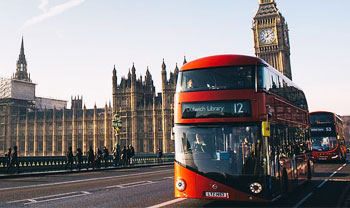Firstly to drive an HGV or large vehicle on the roads in the United Kingdom you must have the correct licence category required on your driving licence to legally drive a particular type of vehicle, this HGV Driving licence explained article shows you some useful category types.
HGV / LGV Category 'C+E' (Class 1)

This category covers any vehicle over 7.5t that has a detachable or separate trailer, Cat ‘C+E’ licences can only be applied for once a driver has taken and passed their Cat ‘C’ (Class 2) licence. ‘C+E’ (Class 1) category licence is for larger articulated vehicles mainly used for long-distance, national and international routes.
Articulated lorry exceeding 7500 kg cat c+e
HGV / LGV Category 'C' (Class 2)

The Cat ‘C’ Category is for vehicles with a rigid-based body that is over 7.5t providing the vehicle is all one unit (this also allows you to have a trailer up to 750kg but not exceeding your maximum authorised mass) MAM.
Rigid lorry exceeding 7500 kg cat c
Category C1

This category is for driving any goods vehicle that is above 3.5t and below 7.5t in weight. If you gained your driving licence before 1997 in the UK, you will automatically have this category on your licence. If you gained your driving licence after 1997, you will have to take a test. This category also allows you to tow a trailer up to 750kg but not to exceed maximum authorised mass ‘MAM‘.
vehicles that exceed 3500kg but do not exceed 7500kg cat C1
Category C1+E
The Category ‘C1+E’ is the same as above but gives you the ability to tow a trailer exceeding 750kg but combined weight must not exceed 12,000kg ‘C1’ vehicle.
vehicles that do exceed 7500 kg and can tow a trailer exceeding 750kg cat C1+E
Category B+E

This category enables you to tow an item behind a standard car or a vehicle with a combined weight of no more than 3.5 tons. Automatic rights if you passed your test before 1997 in the UK – if you passed after 1997, a full course and driving test are required.
car and trailer cat B+E
Category D

The Cat ‘D’ Category is for a full bus/coach licence, enabling you to drive any sized Passenger Carrying Vehicle.
bus, coach licence cat D
Category D1

This enables you to drive a minibus with no more than 16 passenger seats maximum vehicle length of 8 meters. If you passed your driving test before 1997 this category will already be on your license, if you passed after 1997 a full course and test is required.
Minibus up to 16 passenger seats cat D1
Useful Information
‘MAM’ Maximum authorised mass
Maximum authorised mass (MAM) means the weight of a vehicle or trailer including the maximum load that can be carried safely when it’s being used on the road.
This is also known as gross vehicle weight (GVW) or permissible maximum weight.
It will be listed in the owner’s manual and is normally shown on a plate or sticker fitted to the vehicle.
The plate or sticker may also show a gross train weight (GTW), also sometimes called gross combination weight (GCW). This is the total weight of the tractor unit plus trailer plus load.
Unladen Weight
The unladen weight of any vehicle is the weight of the vehicle when it’s not carrying any passengers, goods, or other items.
It includes the body and all parts normally used with the vehicle or trailer when it’s used on a road.
It doesn’t include the weight of Fuel, Batteries in an electric vehicle – unless it is a mobility scooter or powered wheelchair.
Down-Plating
A vehicle can be down-plated if it is unlikely to be used at its potential maximum weight, the lower weight would then be displayed on the vehicle’s plate or sticker.
I hope you found this Article “ HGV Driving Licence Explained Categories” useful I would love to hear your comments please leave a comment below.



